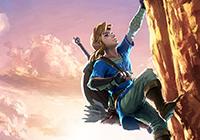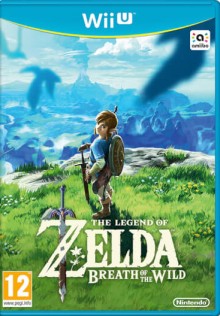It's already been made very clear that an obvious selling point for Breath of the Wild is its huge, fully traversable overworld, but it isn't until you take the controller in your own hands, pick a direction and start running when you realise just how big the game actually is - that is, deceptively big. Cliffs, mountains, lakes, ruins of old buildings, and great grassy plains slowly unfold like a sweeping shot of a Peter Jackson film - and we're told that this is only a mere fraction of what the full overworld will have to offer. The graphics in the game itself look stunning, of course, but that somewhat goes without saying.

When playing the game for the first time, one of the most noticeable aspects is the atmosphere, namely due to the lack of background music. Overworlds in games such as Ocarina of Time and The Wind Waker employed music to drive home very pointed themes of dynamic heroism and adventure. Breath of the Wild's sound design appears to deliver a different kind of experience. As you begin exploring, you start to pick out the seemingly innocuous details in the ambient noise of the world as you travel. The gentle thuds of Link's footsteps on grass. The distant chirruping of birds. Leaves being rustled by the wind. The restless crackling of fire. Every sound is gorgeously well-realised and adds greatly to the intoxicating feeling of immersion - it's all too easy to let the minutes and hours trickle by as you lose yourself in this vast, meticulously detailed garden of discovery.
The gameplay, of course, has also seen some fairly drastic changes. There is heavy emphasis on survival elements in this game, as Link now largely needs to rely on living off the land to stay alive and defend himself. Hearts are no longer found in the wild, and items of food, such as apples, mushrooms and steaks, must be consumed to replenish health. Venturing into colder areas of the land necessitates the donning of warmer, thicker clothing. Skyward Sword's stamina meter also returns, largely unchanged from its first incarnation. It sets strict limits on how far Link can run or climb a wall before running out of energy - making careful judgements on whether a certain wall or cliff face is scalable or not becomes somewhat of a precise art.

The Wind Waker's original system of being able to pick up enemy weapons also returns as a feature, now greatly expanded to also include shields and an array of other assorted weaponry. Players are able to switch between items quickly and intuitively using slight button presses, which will no doubt come in handy when in the heat of the battle. Many weapons break after light or heavy usage, depending on their sturdiness, meaning that it'll probably be prudent to get into the habit of stocking up on supplies as and when needed. BotW is also the first Zelda game to date where arrows, once shot, do not disappear and can actually be picked up again from their landing point and reused; one of many small, yet charming details in the fabric of gameplay.
The game also introduces a number of novel ways to interact with items and the surrounding environment. Link's shield, for example, can be used as a board to navigate inclines, snowboard-style. Arrowheads can be set alight using campfires to add extra firepower to projectiles. Updrafts from fires can be used to give Link an extra lift when equipping the hang glider. These are but to name a few; certainly as we learn more about the game's world and other items available, the potential for wilder and more experimental gameplay mechanics will only grow as time goes on.

There are still a few unanswered questions and doubts surrounding the game, despite the impressive demo. Probably the biggest is regarding the overworld and the potential for it to fall into the trappings of Twilight Princess; that is, size for the sake of size. Much of the land in TP was taken up by vast, featureless expanses of nothingness, and the game ended up feeling somewhat bloated as a result. Breath of the Wild's full overworld is twelve times bigger than Twilight Princess' apparently, but it remains to be seen whether this enormity will be justified, or if it may even just be posturing on Nintendo's part to flex the Wii U's technical muscles while the company still has the chance. In regards to other concerns, such as the apparent lack of settlements, NPCs, enemy variety or companions, these will no doubt be addressed as more of the game is revealed over the course of the year.


 Sign In
Sign In 30.07.2016
30.07.2016 




 Game Details
Game Details
 Out now
Out now  Out now
Out now  Out now
Out now  Out now Also on
Out now Also on 
 Azuardo
Azuardo 
 Link to this post:
Link to this post:  Subscribe to this topic
Subscribe to this topic Features
Features





 Top
Top

